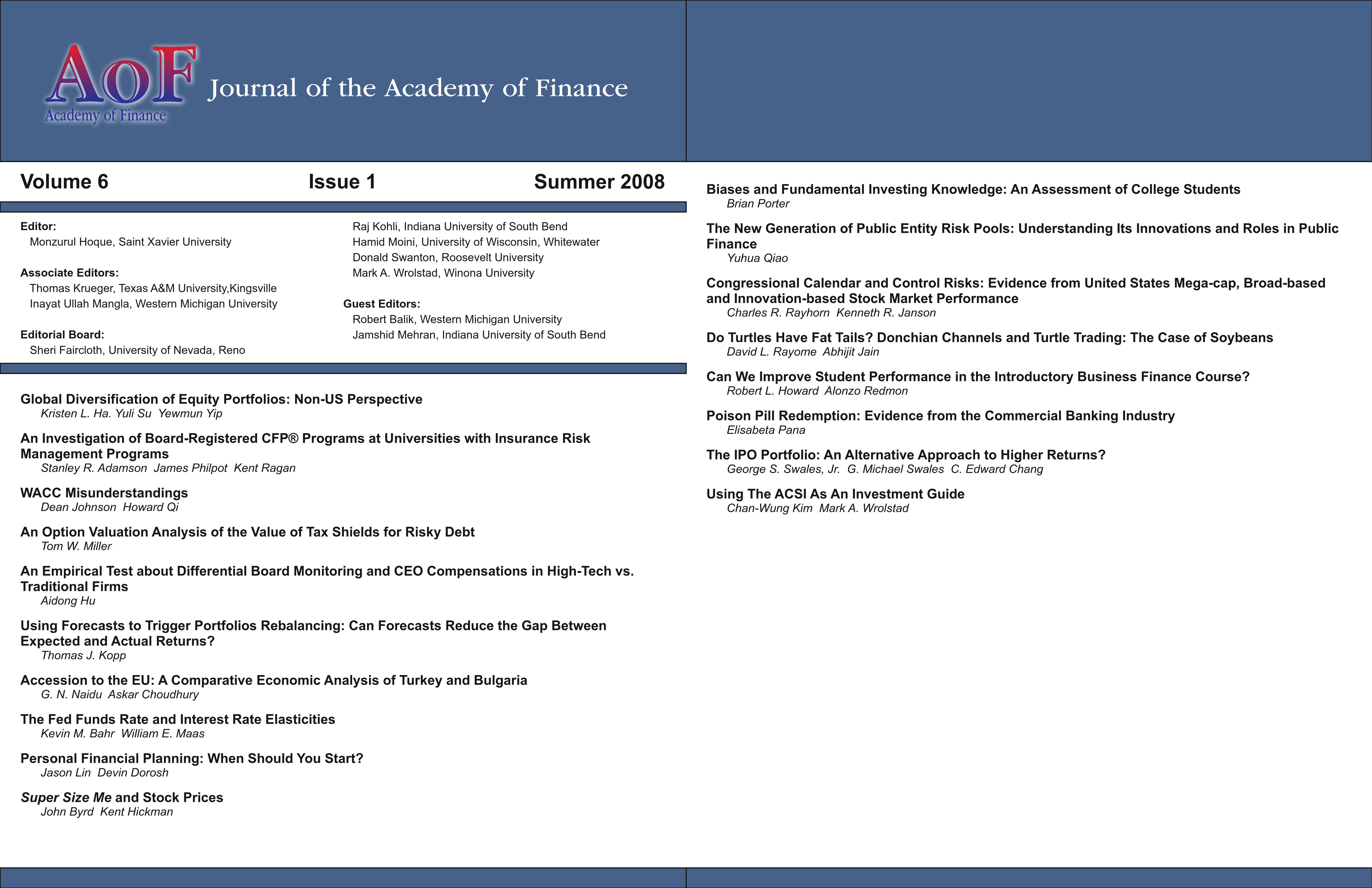Biases and Fundamental Investing Knowledge: An Assessment of College Students
DOI:
https://doi.org/10.58886/jfi.v6i1.2424Abstract
Individuals are being forced to take a greater role in personal retirement planning. Until the mid 1970s, the predominant retirement plan was defined benefit, ralher than defined contribution. Since the 1970s, there has been a move towards defined contribution retirement plans and, in the mid 1990s, defined contribution retirement plans outnumbered defined benefit retirement plans. From 1975 to 1998. there was an increase of 42 million Americans enrolled in non-Social Security retirement programs, from 44 million to 86 million. In 1975, the predominant plan was defined benefit with 32 million Americans participating in 103,000 different defined benefit plans. In contrast, 10 million Americans were participating in 208,000 different defined contribution plans. By 1998, the dominant plan had switched. Forty-six million Americans were in defined contribution plans and 40 million were in defined benefit plans (Migration News). Among Fortune 100 companies the shift is just as dramatic. In 2007, only 28% of Fortune 100 companies offered a defined benefit retirement plan to new employees, compared with 89% in 1985 (Geisel, 2008).





